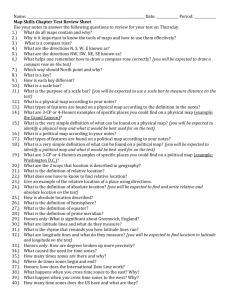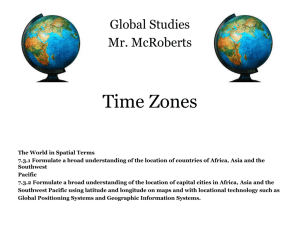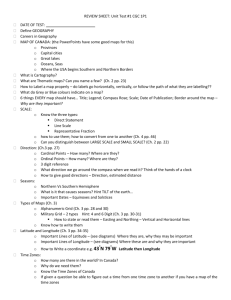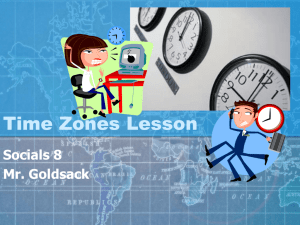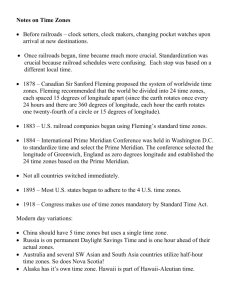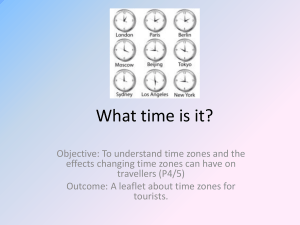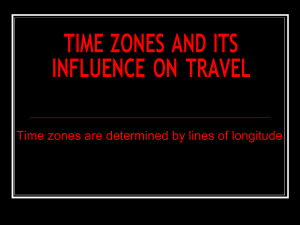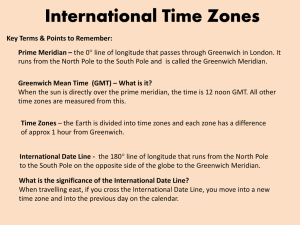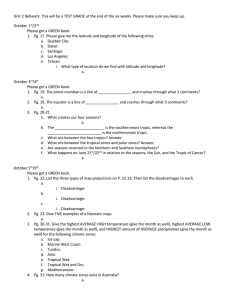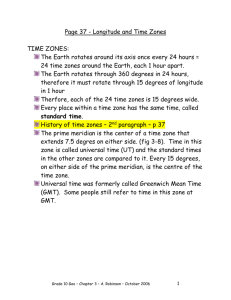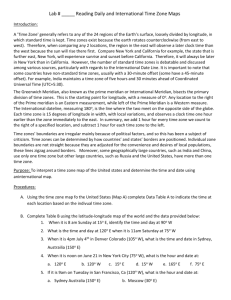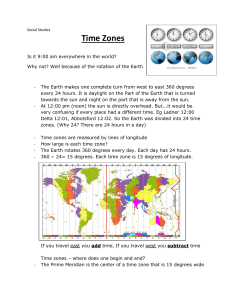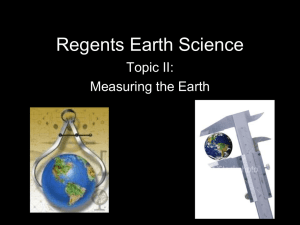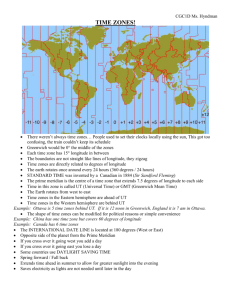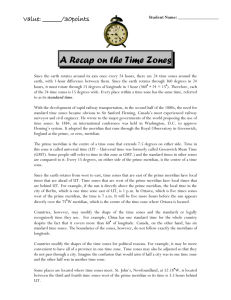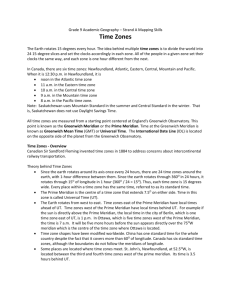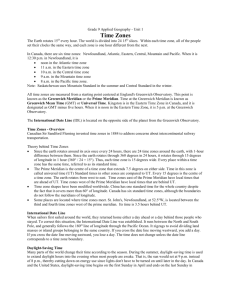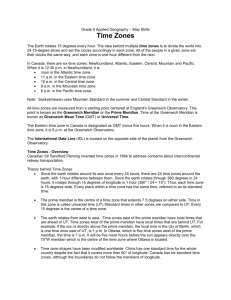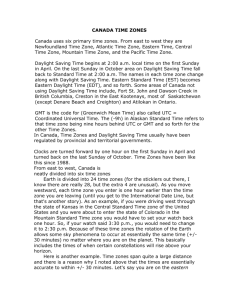Preliminary Geography Skills Test Study Guide (Check for daily
advertisement
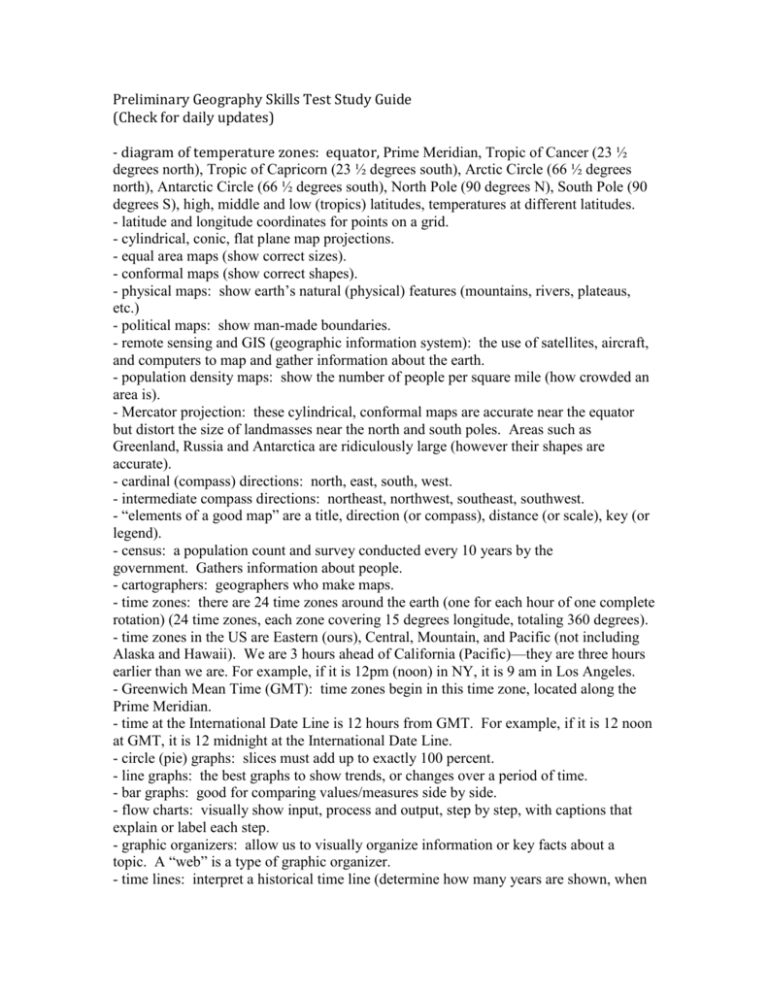
Preliminary Geography Skills Test Study Guide (Check for daily updates) - diagram of temperature zones: equator, Prime Meridian, Tropic of Cancer (23 ½ degrees north), Tropic of Capricorn (23 ½ degrees south), Arctic Circle (66 ½ degrees north), Antarctic Circle (66 ½ degrees south), North Pole (90 degrees N), South Pole (90 degrees S), high, middle and low (tropics) latitudes, temperatures at different latitudes. - latitude and longitude coordinates for points on a grid. - cylindrical, conic, flat plane map projections. - equal area maps (show correct sizes). - conformal maps (show correct shapes). - physical maps: show earth’s natural (physical) features (mountains, rivers, plateaus, etc.) - political maps: show man-made boundaries. - remote sensing and GIS (geographic information system): the use of satellites, aircraft, and computers to map and gather information about the earth. - population density maps: show the number of people per square mile (how crowded an area is). - Mercator projection: these cylindrical, conformal maps are accurate near the equator but distort the size of landmasses near the north and south poles. Areas such as Greenland, Russia and Antarctica are ridiculously large (however their shapes are accurate). - cardinal (compass) directions: north, east, south, west. - intermediate compass directions: northeast, northwest, southeast, southwest. - “elements of a good map” are a title, direction (or compass), distance (or scale), key (or legend). - census: a population count and survey conducted every 10 years by the government. Gathers information about people. - cartographers: geographers who make maps. - time zones: there are 24 time zones around the earth (one for each hour of one complete rotation) (24 time zones, each zone covering 15 degrees longitude, totaling 360 degrees). - time zones in the US are Eastern (ours), Central, Mountain, and Pacific (not including Alaska and Hawaii). We are 3 hours ahead of California (Pacific)—they are three hours earlier than we are. For example, if it is 12pm (noon) in NY, it is 9 am in Los Angeles. - Greenwich Mean Time (GMT): time zones begin in this time zone, located along the Prime Meridian. - time at the International Date Line is 12 hours from GMT. For example, if it is 12 noon at GMT, it is 12 midnight at the International Date Line. - circle (pie) graphs: slices must add up to exactly 100 percent. - line graphs: the best graphs to show trends, or changes over a period of time. - bar graphs: good for comparing values/measures side by side. - flow charts: visually show input, process and output, step by step, with captions that explain or label each step. - graphic organizers: allow us to visually organize information or key facts about a topic. A “web” is a type of graphic organizer. - time lines: interpret a historical time line (determine how many years are shown, when did an event occur, and how long ago something occurred). - decade: ten year period. - century: one hundred year period. - millennium: one thousand year period. - AD: “anno Domini” - BC: “before Christ” - CE: “common era” - BCE: “before common era” - MORE INFO TO FOLLOW (seasons, factors that affect climate, climate regions, culture and race)
